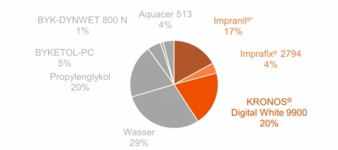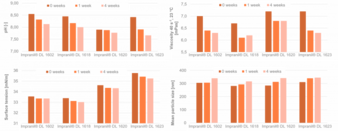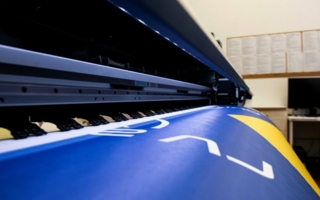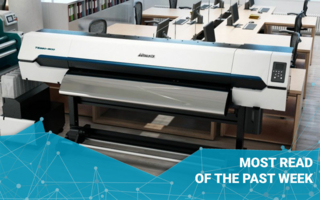07/11/2023 – Covestro & Kronos — auf Deutsch lesen
Digital inject printing collaboration
To overcome the obstacles associated with technology change, joint efforts are required between partners along the value chain. Covestro is therefore cooperating with Kronos to test the compatibility of their complementary products as well as ink stability.
The conventional textile industry has long been a significant contributor to greenhouse gas emissions and environmental pollution.[1] One important step toward mitigating these issues is to substitute traditional manufacturing methods with cutting-edge alternatives like inkjet printing[2] – but optimizing the adoption of digital printing (and magnifying its positive environmental effects) requires the integration of disruptive material innovations. Through collaborative efforts among partners along the value chain, the textile industry can surmount the obstacles tied to these transformative solutions and unlock the full potential of impactful innovation.
Digital inkjet printing, a disruptive technology, requires advanced formulations and a reevaluation of raw materials. Polyurethane (PU) binders offer a pivotal material solution, alongside which it is also imperative to address process- and application-specific opportunities and challenges.
There is robust market demand for direct-to-foil (DTF) printing solutions. DTF involves applying ink to a foil and subsequently transferring it via heat press onto the textile substrate. This indirect, non-continuous method is favored by textile manufacturers for its cost-effectiveness, substrate versatility, and user-friendly attributes, surpassing roll-to-roll and direct-to-garment methods.
Nevertheless, digital application technologies, though promising, are complex systems. The main issues with DTF are the three-step process, the application-related sagging problems, and the haptic properties of printed materials. Close industry collaboration is crucial for driving technological progress, ensuring the compatibility of raw materials in formulations, and tackling challenges to achieve excellent printing results.
Covestro, a leading manufacturer of waterborne PU binders for digital inkjet printing, therefore teamed up with Kronos, a leading producer of titanium dioxide pigments, to test the compatibility and stability of their complementary products in a formulation containing Covestro’s “Insquin” PU binders and Kronos’s Digital White 9900. Compatibility was investigated via a quantitative and visual control, where no significant sedimentation was observed. Furthermore, internal Covestro tests showed good stability of all ink formulations after four weeks at 50 °C. Using the “Impranil DL 1606 PU” dispersion helps to overcome the sagging issues that often appear during the DTF process, enabling high white ink loads with its excellent anti-sagging properties. This innovative material solution is designated for white pigment inks for inkjet printing.





